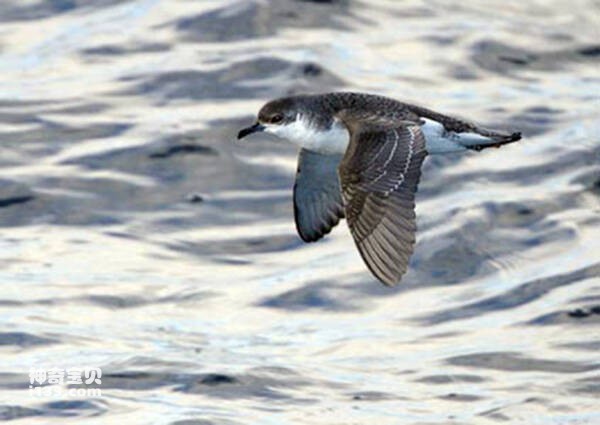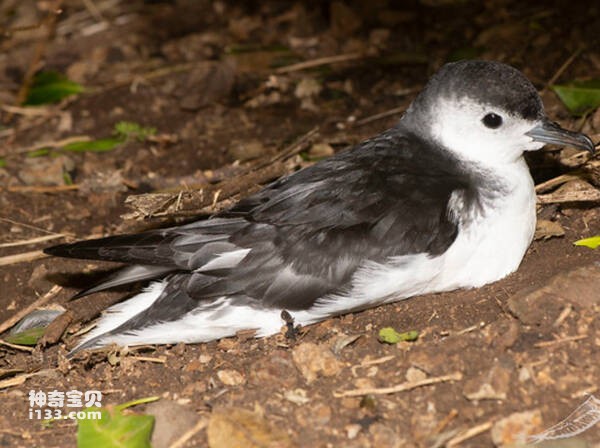Puffinus assimilis
IUCN
LCBasic Information
Scientific classification
- name:Puffinus assimilis
- Scientific Name:Puffinus assimilis,Little Shearwater,水薙鸟
- Outline:Waterfowl
- Family:
Vital signs
- length:25-30CM
- Weight:140-275g
- lifetime:About 10 years
Feature
The bird has a black bill, dark brown eyes, blue legs and webbed feet, and the male and female are identical, but the female has a slightly shorter tail
Distribution and Habitat
Resident birds: Australia, French Southern Territory, New Zealand and Norfolk Island.
Seasonal uncertainty: Cook Islands, Fiji, New Caledonia, Pitcairn and Tonga.
It breeds offshore or on islands in the ocean. The species nests in grasslands and even in forests. In addition to breeding, they are often found in warm tropical and subtropical waters and are often found in coastal areas, unlike most seabirds.
Appearance
The petrel is 25-30 cm long, has a wingspan of 58-67 cm, and weighs 140-275 g. The upper body of the named subspecies is almost entirely black, including the head, wing coverts, and tail. However, the back of the neck may look lighter. The underbody is white, but there is a narrow black border on the underwing. The white underbody is slightly raised on either side of the buttocks. The head, cheeks, and narrow eyebrows are white, while the eye area has small black spots in front of the eyes and at the upper ear covering. The upper chest and lower neck are dark gray with white spots.
The beak is black with a blue-gray undertone. The iris is dark brown. The legs and webbed feet are blue, there is some black on the lateral tarsus and lateral toes, and the membrane is pinkish. The male and female birds are the same, but the female has a slightly shorter tail. Subadult birds are similar to adult birds.
Details
assimilis Puffinus assimilis, also known as Little Shearwater, is a bird of the genus Puffinus assimilis. There are five subspecies.

Petrels are resident birds, spending most of the year around their homes and visiting them even outside of the breeding season. The species flies to the water's edge in search of prey. They glide effortlessly over the waves and accelerate with the wind as they fly at different altitudes. This small seabird flies fast in strong winds, but will fly low above the waves in light winds, making alternating beats of buzzing and gliding.
The petrel is usually quiet at sea. At night, they become more talkative at the residence, where they make their typical, rather strong but raucous calls, recurring asthma. Another description is of a hoarse, rapidly repeating call "kakakak-urr," the last syllable of which appears to be uttered by a bird with short breath. These screams could be heard in the air and on the ground near the cave.

The petrel is not a true gregarier and often forages alone, but will sometimes hunt fish with dolphins. Colonies can also be seen outside of breeding colonies. It feeds mainly on cephalopods, small fish and krill. Prey are usually caught by falling from the sky, catching on the water, or chasing in shallow water.
The petrel usually nests in burrows in the shrubs or forests of the territory. Like many islands in the petrel family, they are male and female, with lasting bonds between their mates. The breeding season occurs during the local summer and varies according to range. These birds go out to sea for about a month to hunt and reserve their energy before spawning. They nest where they live and are sometimes affected by competition with other species for nesting burrows. The nest is a hole dug by the bird itself, 30-200 cm long, and the ground is covered with scattered materials. This cave is usually dug in very fragile soil, which weakens the structure. The nest is located in coastal forests, shrubs or tall grass, on grassy slopes or in forests. Petrels can also use rock crevices or settle between rocks, depending on the site available.

Females lay 1 white egg per litter, and the two adults take turns incubating for 52-58 days, changing every 1 day in Australia and every 7-10 days in New Zealand. At birth, the chicks are covered with gray down. Incubate for 3-4 days and feed at night. The young reach their maximum weight at 45-48 days after hatching and leave the nest at about 70-75 days. The species produces one litter per season. Both sexes share all the brood work.
According to data reviewed by Brooke (2004), the global population of petrel is thought to be over 100,000 pairs, equivalent to over 200,000 mature individuals. Thus, the numbers are in the range of 100,000-499,999 mature individuals. Therefore, the total number is set at an average of 300,000-750,000. The trend proves that suspected populations are declining due to predation by invasive species. They are threatened by predators (cats and mice) introduced to the islands on which they live, as well as disturbances caused by humans, leading to population decline and even partial extinction. In these fragile soils, caves are so fragile that humans walking within their settlements can disrupt their simple passageways. Degradation of nesting habitat due to dune erosion is also a major problem.
Listed on the IUCN Red List of Threatened Species (IUCN)2018 ver3.1 - Not Threatened (LC).
Protect wild animals and eliminate wild meat.
Maintaining ecological balance is everyone's responsibility!








